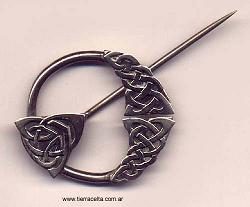 Corn is one of the most abundant and popular cereals in the world, and also one of the most consumed. Yellow in color but also available in different shades of reds, browns and oranges, corn is currently the basis of many cuisines, especially those in Latin America, where the plant originates from, although it is also grown in Europe.
Corn is one of the most abundant and popular cereals in the world, and also one of the most consumed. Yellow in color but also available in different shades of reds, browns and oranges, corn is currently the basis of many cuisines, especially those in Latin America, where the plant originates from, although it is also grown in Europe.
Corn o Zea mays According to its scientific name, it is a grassy plant, which means that it has a cylindrical stem and long, thick leaves, its height ranges from one meter to three high. Corn can also be popularly known as choclo (which would be specifically the fruit of the plant) or cob depending on the Latin American region.
American origin
Corn has been the staple food of the Latin American diet for centuries. With the arrival of Europeans to America in the 15th century, the plant was taken to the Old Continent where it immediately caught on as an accessible food for all social classes and also very nutritious. Although it is difficult to pinpoint in which area of America it may have arisen for the first time, it is considered that both the Aztecs and the Incas knew and used it a long time ago. Corn is currently the most widely produced cereal in the world, having surpassed other staple cereals cultivated around the world such as wheat and rice. One of the largest current producers of this plant is the United States, followed by China, Brazil, Mexico, France and Argentina.
Without a doubt, one of the discoveries of civilizations prior to the discovery of America has been corn and we owe it to them.
There are thousands of varieties of this plant, some easily identifiable by their coloration. Normally, the corn plant is quite tall, reaching eight feet in height. The fruit, or corn, is protected and covered by thick green leaves that together form the husk. The way in which they develop keeps them always attached to the stem, so to discover the corn you have to pull one by one, cutting them at the base. Frost and other climatic factors can easily destroy a corn plantation, a plant native to warm, almost tropical climates.
Use in gastronomy and main nutritional contributions of corn
As we noted above, corn is widely used in gastronomy as part of various culinary preparations such as stews, creams, tamales, salads and desserts, among others, but it is also very common for people to eat it directly after boiling it. . Its sweet flavor, when the corn is really ready and good, turns out to be its most characteristic hallmark and also the secret of its success.
Regarding its nutritional contributions that undoubtedly deserve a separate paragraph because there are many, we must say that it is one of the most complete cereals in this sense. It has and gives us its consumption, mainly, vitamins A, B and E, as well as many minerals (copper, iron, magnesium, zinc, phosphorus), all of them agreeing in the favoring of our metabolism and health, especially in the proper development of the system. central nervous
Vitamin A helps in the proper functioning of the eyes and the youth of the skin
It is also recognized as a very important source of antioxidants, preventing the production of free radicals, the main producers of cancer diseases. Many compounds in corn were used in time to fight tumors. If it is cooked, these properties are increased, for example it is a fact to take into account when consuming it.
Other fundamental contributions that its composition has are proteins and fiber, which protects and favors the proper functioning of our digestive system and reduces cholesterol and glucose levels in our body.
As well as helping to prevent and fight cancer of various kinds, it is also very good for reducing high blood pressure levels and for reducing the effects of diabetes.
Also in pregnancy it is recommended because it helps in the growth of the fetus.









